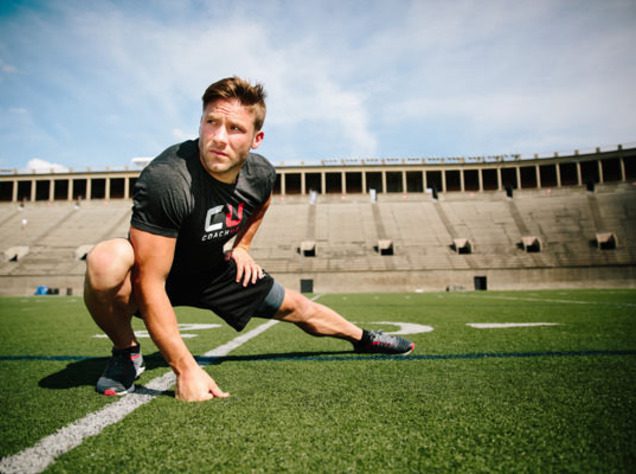The Importance Of Warming Up
For most people, warming up can be annoying and arbitrary. Who wants to warm up when they could be scoring touchdowns? However, athletes need to know that warming up should not be taken lightly and is extremely important to focus on. Remember, injured athletes can’t be on the field!
The purpose of warming up is to lubricate the joints, increase the responsiveness of the central nervous system, prepare the body for the specific movements, and heighten the body’s core temperature. The lubrication of the joints makes moving them easier. For example, the bending of the knee is critical when sprinting, but can never be accomplished with stiff joints.
The joints are better lubricated when the body is warm and able to produce fluid that keeps things moving with little effort. Take a rusted door, for example: when the hinges have not been oiled properly, it labors more to open and close. Well, it works the same with your muscles and joints as well, take care of them and they will take care of you.
)
A Body In Symphony
Simply put, your brain sends messages to the muscles in order to make them move. The central nervous system must be awake to clearly signal to the muscles and efficiently recruit as much muscle fiber as needed to perform a specific movement. If the brain does not send the signal quickly, the body can’t perform that movement with the required speed, which increases the athlete’s risk of injury.
Preparing the body for specific movements by using exercises that activate the same muscles during the warm-up is essential. This method ensures the proper muscle groups are ready to move in any way they are needed. Sprinting in-game require the use of the glutes, hamstrings, hip muscles, and quadriceps, so, of course, it makes sense to focus on these muscles while warming up.
Hot In Here
Increasing your core temperature also makes movement much easier. Just like a warm rubber band can be manipulated more than a cold one, a warm body allows joints and muscles to have a greater range of motion. The body’s temperature should be the first priority of a good warm-up — you wouldn’t turn on an old car and immediately accelerate from 0 to 100 MPH, so don’t take the same approach with your body.
How can you tell if you’re warm enough to begin exercise? A rule of thumb is to break a light sweat before sprinting or performing movements at high speeds. Most athletes start to warm-up their temperature within 10-20 minutes, depending on the preparedness of the athlete. Moreover, you don’t want to turn the warm-up into a workout by making it too long. Then, it will just take away from your workout by using the energy reserves you had originally stored for it.
(Related: Read about proper tackling form here.)
Huddle Up
The warm-up must be versatile enough to be individualized because every athlete varies in mobility and warm-up speed. The drills must have options for very mobile athletes and for those who be less so. For instance, a mobile athlete might perform a bear crawl, but a less mobile one might have to do a more static stretch. Every athlete will differ greatly, so it’s also important to not push yourself to keep up with a teammate. Always go slow and steady, at your own pace, and prepare your body as best as possible!
Be prepared for the biggest moments by mastering the small ones off the field.
How useful was this post?
Click on a star to rate it!
Average rating 0 / 5. Vote count: 0
No votes so far! Be the first to rate this post.



